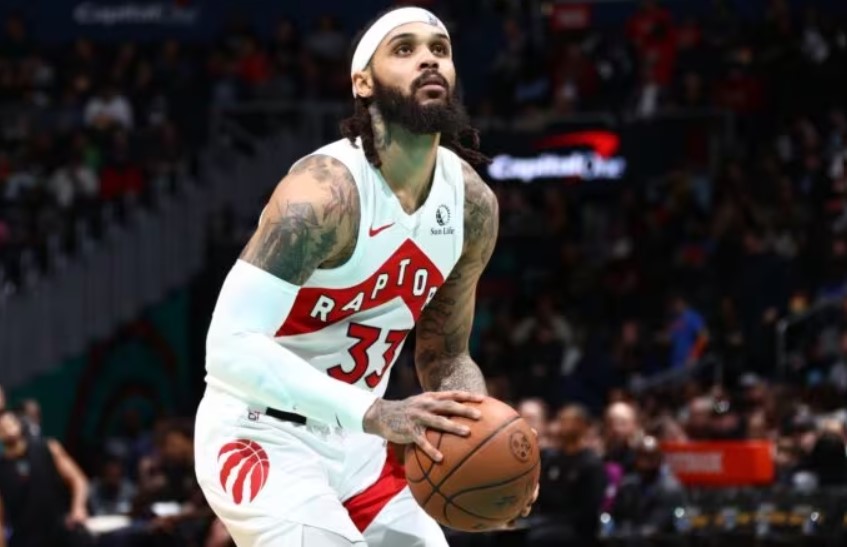NBA Fantasy Games: A Starter’s Guide for Success

Embarking on the journey of NBA fantasy sports can be both exhilarating and daunting for newcomers. At its core, fantasy basketball offers a unique blend of strategy, competition, and the sheer enjoyment of the game. For those new to the scene, understanding the basics is crucial. NBA fantasy basketball is not just about picking your favorite players; it’s about assembling a team that will compete across various statistical categories to outperform your opponents. This requires a keen eye for talent, an understanding of player roles, and the ability to predict performance. Whether you’re in it for fun or the fierce competition, knowing how to navigate the fantasy landscape is your first step toward success.
Mastering the NBA Fantasy Draft
Crafting Your Draft Strategy
A well-thought-out NBA fantasy draft strategy is pivotal to laying the groundwork for a successful season. Your draft strategy should not be rigid; instead, it should be adaptable based on draft flow and other managers’ selections. Start by identifying your league’s scoring system and prioritize players who excel in those areas. Consider drafting a balanced team with a strong presence in every statistical category. It’s also wise to have a mix of star players and consistent performers.
The Best NBA Fantasy Picks
To make informed decisions during the draft, researching how to win NBA fantasy picks is essential. This goes beyond simply looking at the previous season’s top performers. Analyze player trends, offseason moves, potential for improvement, and their team’s style of play. Resources like expert rankings, mock drafts, and player projections can offer valuable insights.
Navigating NBA Fantasy Player Rankings
These rankings provide a snapshot of a player’s projected value for the season. However, it’s important not to follow these rankings blindly. Use them as an NBA fantasy draft guide, but also trust your judgment and analysis. Player rankings often vary from one expert to another, reflecting different valuation methods and perspectives. Your goal should be to identify value picks that others might overlook and avoid overvalued players likely to underperform relative to their draft position.
Identifying Potential NBA Fantasy Sleeper Picks
Sleepers often emerge due to increased playing time, improved skills, or changes in team dynamics. To find these hidden gems, look for players in new roles, young players poised for a breakout season, or veterans in revitalized situations. Keep an eye on training camp reports, preseason performances, and rotation changes. NBA fantasy sleeper picks can make a significant difference in your team’s performance, providing a competitive edge at a lower draft cost.
Staying Ahead with NBA Fantasy Updates
Keeping Up with the News
Regularly monitoring player stats, game highlights, and news updates can provide insights into trends and shifts in player value. It’s important to be proactive, as changes in player performance can impact your team’s weekly matchups and overall standing. Additionally, understanding the context behind the numbers, such as changes in team strategy or player roles, can give you an edge in making timely roster adjustments or trade decisions.
The Role of Injuries and Trades
Injuries and trades are significant factors that can dramatically affect your fantasy basketball strategy. A well-timed trade or waiver wire pickup in response to an injury or trade can transform your team’s fortunes. Here’s how to navigate these unpredictable elements:
- Monitor Injury Reports Daily: Player health can change overnight, so staying on top of injury reports is vital.
- Understand the Impact of Trades: Trades can alter a player’s fantasy value, either positively or negatively, depending on their new role and team dynamics.
- Have a Plan B: Always have a backup plan for your key players, especially those injury-prone or involved in trade rumors.
- Leverage the Waiver Wire: Be quick to act on the waiver wire to secure replacements for injured players or to capitalize on those poised for a larger role post-trade.
- Consider Trade Opportunities: Use injuries and trades within the league to explore trade opportunities. Selling high on a player about to lose value or buying low on one poised to gain can be game-changers.
An injury to a star player can be devastating, but it also opens up minutes and usage for other players on the roster, potentially creating valuable waiver wire pickups. Similarly, trades can disrupt team chemistry and roles but may also lead to increased opportunities for players. Consistently incorporating NBA fantasy updates into your strategy allows for effective team adjustments.
Tips for Managing Your NBA Fantasy Team
Season-Long Strategies for Success
A successful NBA fantasy league tips campaign is a marathon, not a sprint. Implementing season-long strategies is key to staying competitive. Paying attention to the NBA schedule, such as targeting top NBA fantasy players with favorable matchups during fantasy playoffs, can give you a significant advantage. Balancing short-term wins with long-term success is the hallmark of a savvy fantasy manager.
The Art of the Trade: Improving Your Lineup Mid-Season
Mastering the art of trading is a critical skill for improving your lineup mid-season. A well-timed trade can address weaknesses, capitalize on strengths, and significantly impact your team’s performance. Here’s how to approach trading effectively:
- Value Perception: Recognize how your trading partners value their players and find common ground.
- Buy Low, Sell High: Target players who are underperforming but have the potential to rebound, and consider trading away players at their peak value.
- Consider the Future: Look at the remaining schedule and how it might impact player performance.
- Negotiate: Be open to negotiation. The first offer is rarely the best one.
This involves a deep understanding of your team’s needs, a keen eye for player value, and the ability to negotiate deals that are beneficial in the long run. It’s also important to maintain good relationships within your league, as trust and respect can make future trades more feasible. Remember, the goal is not just to win the trade but to win the season.
Monitoring Player Workloads and Rest Days
In the modern NBA, player workloads and rest days have become increasingly important factors in fantasy basketball. Managing NBA fantasy team effectively requires paying close attention to these factors. Players on heavy minutes loads may be at higher risk of injury or unexpected rest days, particularly in teams that have secured their playoff spot or are out of contention. Conversely, players in these scenarios might see increased opportunities.
Strategies for Fantasy Basketball Beginners
Avoiding Common Pitfalls
One of the most valuable pieces of starting fantasy basketball advice is to avoid common pitfalls that beginners often face. A frequent mistake is overvaluing players from your favorite NBA team or those with big names who may not contribute across multiple categories. Beginners should strive for patience and not make hasty decisions based on short-term performance. Remember, the fantasy season is long, and consistency is often more valuable than brief spurts of high performance.
Applying Fantasy Scoring Systems
Different leagues have different focuses, with some valuing individual stats like points or rebounds more heavily than others. Knowing how each stat contributes to your fantasy points will guide your draft strategy and in-season management decisions. For instance, if steals and blocks are highly valued, targeting defensive specialists could give you an edge. Adjusting your fantasy basketball strategy for starters to fit the scoring system is a fundamental skill that tips for fantasy basketball beginners need to develop for long-term success.
The path to fantasy basketball mastery is one of continuous learning. Each season offers new lessons, trends, and strategies to absorb. Engaging with the fantasy basketball community, analyzing player performances, and reflecting on your decision-making processes are all part of growing as a fantasy manager. Remember, every manager has wins and losses, but the willingness to learn from both sets the best apart. Embrace the journey, stay curious, and always look for ways to improve your understanding of the game and your fantasy skills. With dedication and insight, the path to fantasy basketball success is well within your reach.
For More: Gorillaoverview




